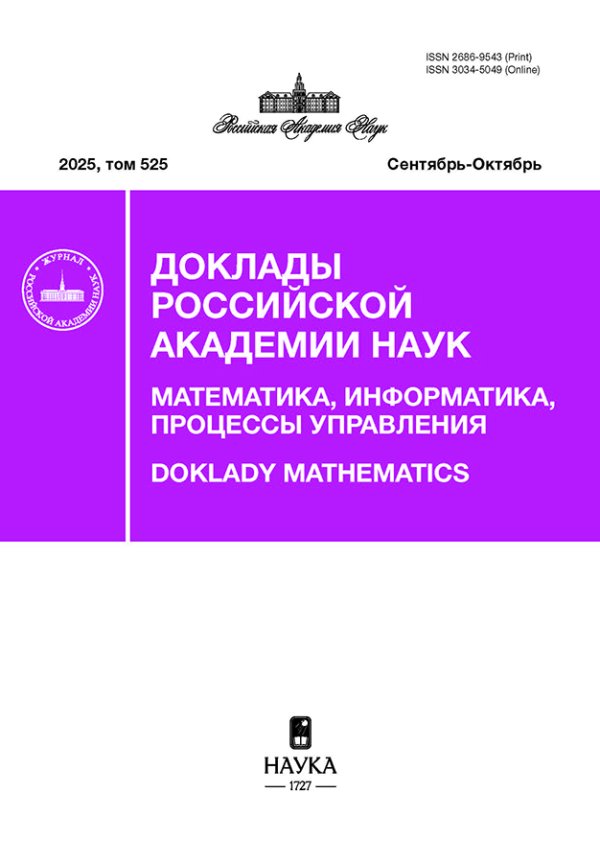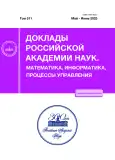КОМПЬЮТЕРНЫЙ ЭКСПЕРИМЕНТ В ОБУЧЕНИИ МАТЕМАТИКЕ
- Авторы: Шабат Г.Б.1,2,3, Семенов А.Л.4,5,6
-
Учреждения:
- Российский государственный гуманитарный университет
- Московский педагогический государственный университет
- Независимый Московский университет
- Московский государственный университет имени М.В. Ломоносова
- Институт образования, НИУ Высшая школа экономики
- Московский физико-технический институт (национальный исследовательский университет)
- Выпуск: Том 511, № 1 (2023)
- Страницы: 111-137
- Раздел: МАТЕМАТИЧЕСКОЕ ОБРАЗОВАНИЕ ЦИФРОВОГО ВЕКА
- URL: https://journals.rcsi.science/2686-9543/article/view/142186
- DOI: https://doi.org/10.31857/S2686954323700212
- EDN: https://elibrary.ru/VRUGUQ
- ID: 142186
Цитировать
Полный текст
Аннотация
Математический эксперимент всегда был ключевым источником для математического открытия. За последние 50 лет благодаря цифровым технологиям его роль в математических исследованиях существенно выросла. Цифровые технологии открыли принципиально новые возможности для эксперимента в математическом образовании, в приближении для основной массы обучающихся математического образования к математическому исследованию. Такое приближение особенно желательно именно в современном мире, где оно становится возможным благодаря цифровым технологиям. В статье обсуждаются результаты работы авторов в течение последних десятилетий по применению компьютерного математического эксперимента на разных ступенях школьного и университетского образования. Особое внимание уделяется средам динамической геометрии. Также рассматриваются возможности использования систем компьютерной алгебры. Подробно рассматривается проект работы школьников над обобщениями теоремы Наполеона.
Об авторах
Г. Б. Шабат
Российский государственный гуманитарный университет; Московский педагогический государственный университет; Независимый Московский университет
Автор, ответственный за переписку.
Email: george.shabat@gmail.com
Россия, Москва; Россия, Москва; Россия, Москва
А. Л. Семенов
Московский государственный университетимени М.В. Ломоносова; Институт образования, НИУ Высшая школа экономики; Московский физико-технический институт (национальный исследовательский университет)
Автор, ответственный за переписку.
Email: alsemno@ya.ru
Россия, Москва; Россия, Москва; Россия, Москва
Список литературы
- Вишняков Ю.С., Семенов А.Л., Шабат Г.Б. Работа математика как прообраз освоения математики учащимися. Роль эксперимента // Настоящий сборник.
- Шабат Г.Б. “Живая Математика” и математический эксперимент // “Вопросы образования”. 2005. Вып. 4. С. 156–165.
- Успенский В. Гуманитарное и математическое: преодоление барьера // Труды по нематематике, 2-е изд., испр. и доп. : В 5 кн. Кн. 2. 2014. С. 25–64. ISBN 978-5-94282-676-5.
- Vavilov N. Reshaping the metaphor of proof // Phil. Trans. R. Soc. A. 2019 377: 20180279. URL: https://doi.org/10.1098/rsta.2018.0279
- Начала Евклида // Пер. с греч. и комментарии Д.Д. Мордухай-Болтовского при ред. уч. И.Н. Веселовского и М.Я. Выгодского. М.–Л., ГТТИ, 1949–1951.
- Miller N. Euclid and His Twentieth Century Rivals: Diagrams in the Logic of Euclidean Geometry // Center for the Study of Language and Inf, 2007.
- Гильберт Д. Основания геометрии // Пер. с нем. под ред. А.В. Васильева. Л., “Сеятель”, 1923.
- Тихомиров В.М. Рассказы о максимумах и минимумах // Серия «Библиотечка “Квант”», вып. 56. М., Наука, 1986.
- Артин Э. Геометрическая алгебра. М., Наука, 1969.
- Grothendieck A. Esquisse d’un Programme // Unpublished manuscript, 1984). Eng. transl. by P. Lochak and L. Schneps in Geometric Galois actions, vol. 1, London Math. Soc. Lecture Note Ser. vol. 242. Cambridge Univ. Press, Cambridge, 1997. P. 5–48.
- Firsov V., Semenov A. School Mathematics in Russia // “National Presentations: Russia”, 10-th International Congress on Mathematical Education, Copenhagen, 2004. URL: https://alsemenov.com/work-achievements/international-congress#rec346136312
- Shabat G. Napoleon’s Theorem and its Generalizations, Found by Moscow High School Students // The talk on ICME10 (the 10th International Congress on Mathematical Education, Copenhagen, 4–11 July, 2004, unpublished.
- Макарова П.С., Тесля О.Ю., Шабат Г.Б. Обобщенные преобразования Наполеона // Материалы весенней научной сессии преподавателей каф. геометрии математического факультета МПГУ и каф. алгебры и геометрии факультета естественных наук университета им. Палацкого в Оломоуце. М., МПГУ, 2017. С. 35–41.
- Aubel H. van Note concernant les Centres des Carrés Construits sur les Côtes d’un Polygone Quelconque // Nouv. Corresp. Math. 4, 1878. P. 40–44.
- Бахман Ф., Шмидт Э. -угольники // Сер.: Современная математика. Популярная серия. М.: Мир, 1973. 248 с.
- Яглом И.М. Геометрические преобразования. Том 1. Движения и преобразования подобия // Сер. “Библиотека математического кружка”, вып. 7. М.: Государственное издательство технико-теоретической литературы, 1955. 144 с.
- Дубровский В.Н. Интерактивные задания 74–78 в комплексе 1С:Урок. Библиотека интерактивных материалов. Математика. Виртуальные лаборатории по математике, 7–11 кл. Планиметрия. Дополнительные модели. Геометрические преобразования // URL: https://urok.1c.ru/library/mathematics/virtualnye_laboratorii_po_matematike_7_11_kl/planimetriya/dopolnitelnye_modeli/geometricheskie_preobrazovaniya
- Гиндикин С.Г. Рассказы о физиках и математиках // Московский Центр Непрерывного Математического Образования, 2018.
- Бугаенко В.О. Уравнения Пелля. М., МЦНМО, 2001.
- Colebrooke H.T. Algebra, with Arithmetic and Mensuration, from the Sanscrit of Brahmagupta and Bháscara. John Murray, London, 1817. Reprinted by Martin Sandig, Weisbaden, 1973.
- Kreydlin G.E., Shabat G.B. Mathematical Theorems in Natural Languages // Advances in Mathematics Research. 2020. V. 28. P. 181–194.
- Берс Л. Математический анализ // Пер. с англ. под ред. И.М. Яглома. М., “Высш. школа”, 1975.
- Арнольд В.И. Исчисление змей и комбинаторика чисел Бернулли, Эйлера и Спрингера групп Кокстера // УМН. 1992. 47:1(283). P. 3–45.
- Mengoli P. Novae Quadraturae Arithmeticae seu de Additione Fractionum // Bologna, 1650.
- Bernoulli J. Tractatus de seriebus infinitis // Basel, 1713.
- Euler L. De Summis Serierum Reciprocarum // Commentarii academiae scientiarum Petropolitanae (1740), 7:123–134.
- Шабат Г.Б. Несколько взглядов на числа Каталана // В сб. “Элементы математики в задачах” под ред. А.А. Заславского, А.Б. Скопенкова и М.Б. Скопенкова. М., МЦНМО, 2018.
- Wilf H.S. Lectures on Integer Partitions // University of Pennsylvania, 2000.
- Фукс Д.Б. Когомологии бесконечномерных алгебр Ли // М.: Наука, 1984.
- Шабат Г., Сгибнев А. Склейки многоугольников // Квант. 2011. № 3. С. 17–22.
- Filakovsky M., Franek P., Wagner U., Zhechev S. Computing Simplicial Representatives of Homotopy Group Elements // Journal of Applied and Computational Topology. 2018. V. 2. P. 177–231.
- Lagarias J.C., ed. The Ultimate Challenge: The Problem // American Mathematical Society, 2010.
- Lanford III O. A Computer-assisted Proof of the Feigenbaum Conjectures // Bull. Amer. Math. Soc. 1982. 6 (3). P. 427–434.
Дополнительные файлы



































